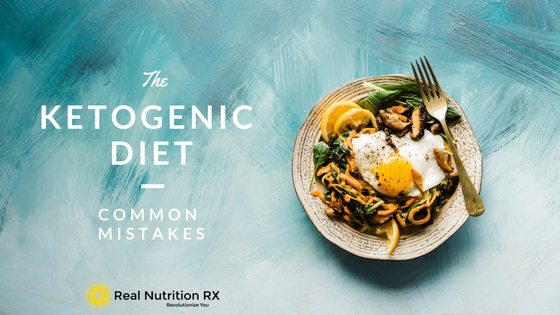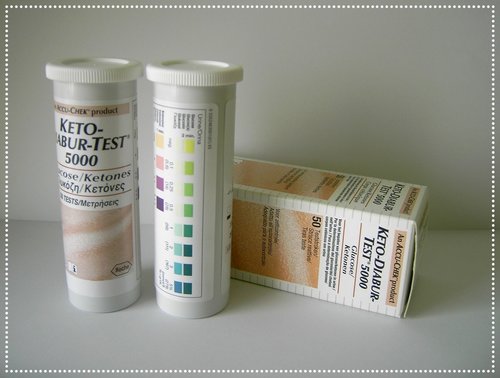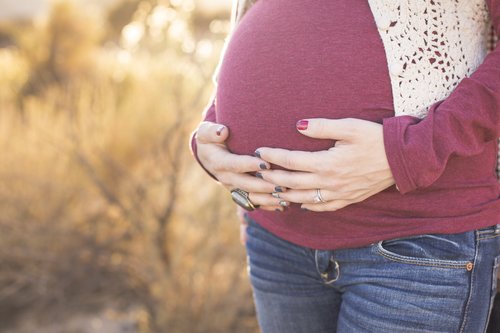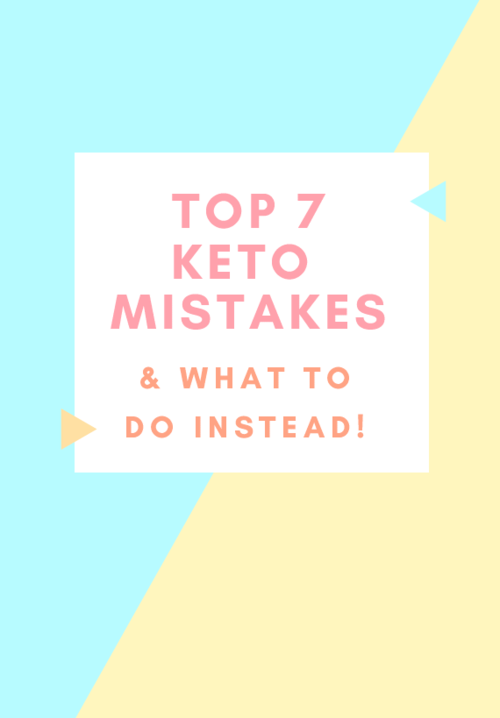The 7 Most Common Keto Mistakes (and What to do Instead) from a Registered Dietitian

The ketogenic diet is all the rage right now, and I’ve actually found it to be very polarizing! People either love or hate the idea.
The truth is that the ketogenic diet can provide incredible benefits for some people…. IF it’s executed well. Unfortunately, I’ve seen a lot of people try it out and have a horrible experience. This is because people who give keto a try usually make some common mistakes. These mistakes can make it a pretty horrible experience!
I routinely follow a ketogenic diet twice each year and have helped countless clients do the same. My clients and I have gained control over sugar cravings and have lost the weight we needed to. Fortunately, I have a lot of experience and knowledge around the diet, so I am able to help my clients avoid any of these common keto mistakes.
So, I’d like to share some tips for following a ketogenic diet, so that you can have the best chance of success if you try it!
Common Keto Mistakes
- Test don’t guess. It’s essential to actually enter ketosis in order to get any benefit from the diet. The only way to know if you’re in ketosis is to test for ketones. It’s OK to use urine strips like these at first, although they stop working after a couple of months if you stay on the diet. Or, you can use a blood or breath test. However, just guessing doesn’t work!

Test, Don’t Guess! - Avoid carbohydrate purgatory. A ketogenic diet is NOT simply cutting out all of the carbs from your diet. It’s three things:
- Low in carbohydrate
- Moderate in protein
- High in fat
What I often see go wrong here is that people aren’t used to eating a lot of fat (or they’re scared to). So, they cut the carbs but don’t increase fat. They might also be eating too much protein and/or too many carbs. In the end, if you’re not in ketosis but are also eating very few carbs, your body has no fuel! You’re not making ketones and you’re not eating what you need to make blood glucose either. The result leaves you feeling weak, low in energy, and literally sick (often, this is called ‘keto flu’). So, make sure to follow all 3 components of a ketogenic diet in order to feel good and reap the benefits.

Avoid Carbohydrate Purgatory (This is a common cause of ‘keto flu’!) - Track your macros. Again, guessing doesn’t work here. Eating enough calories with the right ketogenic macros is NOT intuitive. It doesn’t look like a normal diet at all. So, make sure to enter all of your food into a free tracker in order to make sure you’re hitting your goals. I recommend Cronometer for tracking keto macros.

Track Your Macros - Focus on fiber. As you can probably imagine, a low carbohydrate diet doesn’t make it easy to get enough fiber. In fact, most people don’t eat enough fiber on a normal diet. However, with some focus on this, it’s entirely possible. Yesterday I had 30 grams! Women should aim for at least 25 grams and men should aim for 35 grams. Some keto-friendly sources of fiber include:
- Avocado
- Low carb veggies like greens, broccoli raab, cabbage, and bok choy
- Psyllium husk
- Acacia fiber
- Shirataki noodles
- Nuts
- Chia and/or hemp seeds
Getting enough fiber will prevent constipation as well as ensure the health of your microbiome. So, it’s important not to ignore this

Focus on Fiber - Heed the electrolytes. If you’ve read much about ketogenic diets you might have heard of ‘keto flu’. The initial phase of switching into the metabolic process of ketosis can cause electrolyte shifts. This can leave people feeling….well….flu like. So, make sure to get enough electrolytes from your food by salting it, eating greens, and possibly making keto lemonade. I make it with 2 cups water, ice, the juice of 1 lemon, ¼ tsp salt, and some stevia. The most important time to do this is during the first week of the diet.

Heed the Electrolytes: Keto lemonade is a great first step. - Choose your priorities. It’s no secret that a ketogenic diet isn’t the best way to fuel for exercise. This is especially true for high-intensity exercise. If someone tells you otherwise, they’re either lying or uninformed. So, if you’re an athlete (professional or recreational), prepare yourself mentally for this. There are many benefits that can come from a well-executed ketogenic diet, but your workouts might suffer. Make sure to weigh the cost/benefit analysis for your specific situation before you decide to try a ketogenic diet. Sometimes the benefits are worth having ‘less great than usual’ performance at the gym or Crossfit box. Sometimes not. Work with a professional if you’re unsure if the ketogenic diet is the right fit.

Choose your Priorities - Make sure it’s appropriate for you. I know – it seems like everyone is doing it. However, a ketogenic diet isn’t the right fit for everyone, and it can actually be dangerous for some. So, make sure to talk with your healthcare provider before you begin, especially if you meet any of this criteria:
- Have a medical diagnosis such as diabetes, cardiovascular disease, gout, or IBS
- Are pregnant and/or breastfeeding
- Are under age 18
- Are very active (see above)
- Have a history of disordered eating
- Are under-weight and/or under-nourished
There are some labs that I like to monitor for all of my clients who are on a ketogenic diet as well, so make sure to discuss that with your healthcare provider. Some of these include a fasted insulin panel, a CBC and CMP, and HbA1c.

Check if it’s right for you.
Remember – a ketogenic can be an incredible experience for many people. However, it’s important to do it the correct way, and to seek out help if you need it. Unfortunately, many of the resources I see online don’t really set people up for success.
I’d love to hear from you – what questions do you have about the ketogenic diet? If you’ve tried it, how did it go? You can leave a reply in the comments below!
Don’t miss out on keto success!
Grab my free handout with these tips and tricks, plus more. I’ll keep you updated with keto news and how-to’s as I release them!
Best wishes,
Erin Skinner, MS, RD, IFNCP, CLT, CPT

P.S. Questions about whether keto might be right for you? Please feel free to contact me HERE.

